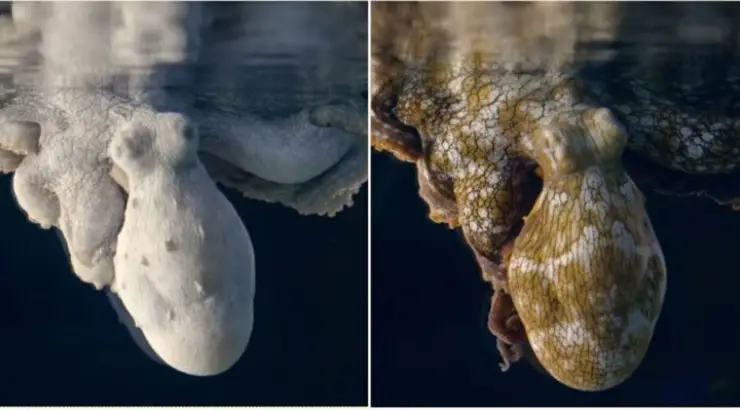Animals
Watch This Sleeping Octopus Change Colors and Patterns as It Dreams
Incredible footage shows an octopus, seemingly dreaming, change colors as she lays upside down in the water.

(TMU) — Incredible footage captured for a nature documentary depicts the moment that an octopus, seemingly dreaming as it is in a deep sleep, begins to change colors as she lays upside down in the water.
The clip, narrated by marine biologist Dr. David Scheel, shows how the octopus’ cloaking abilities remain active even as it is sleeping in its aquarium.
As Dr. Scheel imagined the dream the octopus may be having as its colors begin to change, he said:
“If she is dreaming, this is a dramatic moment.
So here she’s asleep, she sees a crab and her color starts to change a little bit … Then she turns all dark.
Octopuses will do that when they leave the bottom [of the ocean].”
The octopus’ color then cycles from a pale white to a darker tan and then to a spotty, speckled pattern.
Scheel continued:
“This is a camouflage … like she’s just subdued a crab and now she’s going to sit there and eat it and she doesn’t want anyone to notice her.”
The doctor then described the rapid cycling through different colors as “very unusual,” adding:
“To see the color come and go on her mantle like that, just to be able to see all the different color patterns flashing one after the other, you don’t normally see that when an animal’s sleeping.
This really is fascinating.”
While the narrator described the color changes as a phenomenon he had “never seen recorded before,” similar footage from 2017 that emerged last year showed another octopus similarly transitioning between different colors while it slept.
Cephalopods—the family of mollusks that include octopus, squid, cuttlefish, and nautilus—are often referred to as the “chameleons of the sea” due to their ability to change their color and patterns through neural controls. The ability evolved through adaptation and natural selection and is the product of different types of cells acting together to produce the camouflaging effect.
However, only one animal in the family of Cephalopoda class of mollusks has been actually proven to be capable of dreaming.
A 2012 study found that cuttlefish appear to go into a state of rapid eye movement (or REM) sleep, not unlike humans, indicating the possibility that they are dreaming. The cuttlefish also displayed similar color changes to those displayed by the octopus in the video.
By Elias Marat | Creative Commons | TheMindUnleashed.com
Typos, corrections and/or news tips? Email us at Contact@TheMindUnleashed.com
